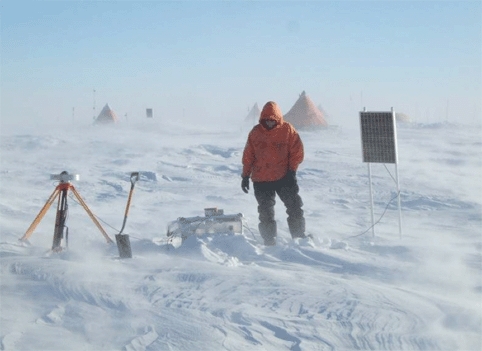In a paper published in Geophysical Research Letters this week, scientists from Northumbria University, Edinburgh University and the British Antarctic Survey have revealed the optimal drill site for exploring Lake Ellsworth, a sub-glacial lake comparable in size to Lake Windermere that is covered by 3km of ice.
Microbiologists believe that such lakes could harbour uniquely adapted life forms cut off from other lines of evolution. Paleoclimatologists also suggest that sediments on the lake floors could contain records of ice sheets and climate history that would improve research into global warming.
Speaking to The Engineer in July 2009, Martin Siegert, head of the School of Geosciences at Edinburgh University, said: ’We know from seismic studies that there are sediments at the bed of the lake and sedimentology tells us that these sediments will have a record of climate change. If the ice shelf collapsed in the past, they would contain evidence of it and would be able to tell us when it happened.’ Click here to read the full article.

Choosing the right drill site
The optimal drilling site has to avoid possible areas of incoming water that would disturb the sediment, as well as areas of basal freezing, where lake water freezes to the underside of the ice. It also has to avoid any concentrations of trapped gases that could rush up the bore hole to cause a potentially dangerous blowout at the surface.
The Scientific Committee on Arctic Research identified Lake Ellsworth as the prime candidate for the first drill site.
Dr John Woodward, from Northumbria University’s School of Applied Sciences, said: ‘The location provides a deep water column for sampling and reduces the risk from possible basal-freezing mechanisms. It optimises the chances of recovering an undisturbed, continuous sedimentary sequence from the lake floor and minimises the potential for trapped gases to gain entry to the borehole.’
To locate the optimal drill site, the team had to conduct the first detailed characterisation of the physiography of a sub-glacial lake. Between 2007-2009, the lake was subject to a ground-based geophysics campaign involving an ice-penetrating radar to investigate ice thickness, seismic surveys to calculate lake-water depths and flow measurements to calculate how the ice sheet flows over the underlying lake.
The climactic stage in the project will take place in the 2012-13 Antarctic summer, when the Lake Ellsworth Consortium will use the data in this paper to access a sub-glacial lake for the first time.
Investigations conducted between 2007-2009 revealed a body of water that sits in the bottom of a narrow, steep-sided valley.
The lake is 14.70km long and has a maximum width of 3.05km and a total surface area of 28.90km2.
The thickness of the overlying ice decreases from 3,280m to 2,930m down the lake’s long axis.
In the same direction, the lake-surface elevation rises from 1,361m to 1,030m.
Profiles of the lake bed and surface reveal a broad, generally U-shaped, lake-bed topography with water depth progressively increasing down-lake, with the maximum water depth on the up-lake survey line being 52m, increasing to a maximum of 156m on the down-lake survey line.
Source: Northumbria University





Swiss geoengineering start-up targets methane removal
No mention whatsoever about the effect of increased methane levels/iron chloride in the ocean on the pH and chemical properties of the ocean - are we...